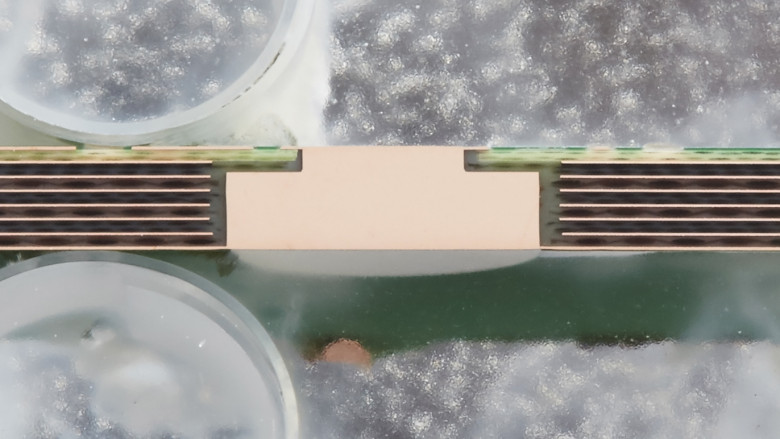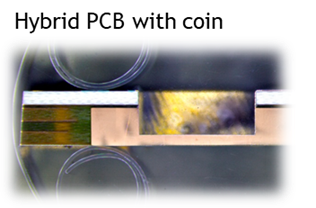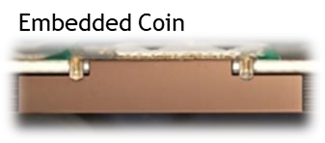
When electric current flows through electronic components some heat is always generated. The amount of heat depends on the power, device characteristics and circuit design. High-performance components, high power transistors and LED-application boards typically require planning for heat management. Our customers from the semiconductor, automotive, telecommunications, industrial automation, aerospace and defense sectors are more and more confronted with the topic of thermal management. And as their partner we at Aspocomp are frequently supporting them in solving the challenges.
Higher integration level driven by product miniaturization and an increasing function/area ratio, results in higher power dissipation of the components and require smart thermal management solutions. There is no standardized and general solution for cooling. Successful heat management always requires an approach tailored to the respective product design. In most of the cases, the circuit board has a key role in the cooling solution. It is therefore essential to involve the circuit board manufacturer at a very early stage of the development to get as direct as possible a technical and cost optimized solution for each case.
Different thermal management solutions
We have experience on wide variety of thermal management solutions, that we can offer from our “tool—box” to solve different kind of cooling challenges. Some of the most common cooling solutions are:
- Embedded Copper coin technology (I, T and C-coins)
- Thick copper layers in PCB
- Metal-back boards (pre- and post-bonded)
- Via farm cooling by plugged and capped vias / IPC Type VII




Typical questions
Typical questions at the beginning of a development to identify suitable solution for product thermal management challenges are, for example:
- What is the amount of heat to be dissipated?
- Is it a spot heating e.g. by a component or surface heating of the circuit board?
- Which options for heat dissipation are available?
- Can we get heat removed e.g. via housing connection?
- How can the heat adaptation to the heat sink or the housing take place?
- Can we spread the heat on the circuit board?
- Is it necessary to transfer the heat as directly as possible through the circuit board?
- Or is the combination of the two the solution for the temperature issue?
When the above questions are answered, we at Aspocomp will find a tailor-made solution together with our customers’ development teams. With our 20-year experience on the production of special circuit board concepts for heat dissipation, we are well equipped for this. Various copper coin, via farm and heatsink solutions are available for solving the temperature issue.
Real life example
Below a top view and a microsection picture of a PCB shows a very effective cooling of a power MOSFET (Metal Oxide Semiconductor Field Effect Transistor). In this case the housing of the MOSFET can be connected directly to the copper coin on the top side of the PCB. The high temperature created by the MOSFET is transferred via the copper coin through the PCB, from where a direct connection to a cooling body or to the housing of the device to the bottom side of the copper coin can help to get the high temperature away from the MOSFET and the PCB.


For further information our sales staff and technical support team will be available at any time.